What's New
Displaying results 3661 - 3670 of 4914

Resource | Publications,
The preparation of the 2010-2011 Global AIDS Progress Report involved consultation with HIV stakeholders in country, including government officials, bi-laterals, civil society and faith based organizations and United Nations Agencies. Interviews were held with key government and civil society partners and a consensus building process was ensured. This process has enabled stakeholders to take stock of the current HIV situation as well as provide guidance on future programme needs.
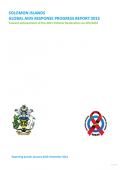
Resource | Publications,
This report provides the most current available information on the HIV/AIDS epidemic and response in Solomon Islands for the years 2010 and 2011, with the aim of tracking the country’s progress towards achievement of the 2011 Political Declaration on HIV/AIDS.
The report was prepared by the Government of the Solomon Islands led by the Ministry of Health and Medical Services HIV/AIDS Unit and the Solomon Islands National AIDS Council (SINAC). Clinical and policy staff of the HIV/STI Unit, government and civil society stakeholders, faith based organisations, people living with HIV, and multilateral and bilateral development partners contributed at various stages of the preparation process, particularly during data collection, report development and review.

Resource | Publications,
The preparation of the 2012 Global AIDS Progress Report (GAPR) for Palau was facilitated and compiled by the Ministry of Health (MoH), in consultation with relevant government agencies and one non-government organization (NGO) partner involved in the response to HIV/AIDS and STIs in Palau, and with technical assistance from a UNAIDS consultant assigned to this task.

Resource | Publications,
This report highlights Tonga’s commitment to the 2011 Political Declaration on HIV/AIDS and its new targets – by 2015 to reduce sexual transmission of HIV infection amongst people who inject drugs by half, to increase the number of people on treatment to 15 million, to halve tuberculosis-related deaths in people living with HIV, and to eliminate new infections among children. Tonga is therefore joining the world to make zero new HIV infections, zero discrimination and zero AIDS-related deaths a global reality.
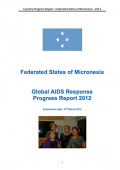
Resource | Publications,
The Federated States of Micronesia contains 607 volcanic islands and atolls scattered over 1 million square miles of the Pacific Ocean. The land area totals 704.6 square kilometres, with 7192 square kilometres of lagoon area. The Federated States of Micronesia is a constitutional federation of four states: Chuuk, Kosrae, Pohnpei and Yap.
The process for compiling the report was initiated in December 2011 when UNAIDS (Suva) invited the FSM Focal Point to submit the Global AID Response Progress Report (GARP).
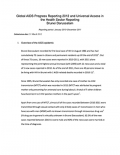
Resource | Publications,
Brunei Darussalam recorded its first local case of HIV in August 1986 and has had cumulatively 72 cases in citizens and permanent residents up till the end of 2011. Out of these 72 cases, 16 new cases were reported in 2010-2011, with 2011 alone representing the joint highest annual increase (with 2009) with 11 new cases and a total of 5 new cases reported in 2010. As of the end of 2011, there are 49 persons known to be living with HIV in Brunei with 1 AIDS-related deaths recorded in 2010-11.
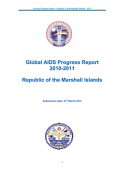
Resource | Publications,
The Marshall Islands consists of 29 coral atolls and 5 coral islands lying between 160-173 degrees east longitude and 4-14 degrees north latitude, in the North Pacific Ocean.
The Focal Point for RMI attended a UNAIDS/SPC training workshop in Nadi in late January to discuss the purpose of the GAPR. Subsequently the consultant agreed on a workplan for data collection, analysis and submission of the report with the Focal Points from Government and the NGO sector. A small working group was nominated, and key contact points identified.

Resource | Publications,
This report was compiled under the guidance of the Kiribati Country Coordination Mechanism for HIV, Sexually Transmitted Infections (STI) and Tuberculosis (TB) (CCM) and reporting was led by the Government of Kiribati Ministry of Health and Medical Services (MHMS) HIV & STI Unit. Data was collected and validated in a consultative and participative process involving government, non-government and civil society stakeholders. Litmus Ltd. provided technical support to the MHMS HIV & STI Unit throughout the reporting process, including data collection, analysis and validation, and drafting the narrative Country Progress Report.
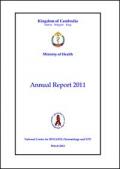
Resource | Publications,
This report describes the achievement of program implementation on HIV/AIDS and STI prevention, care, support and treatment during the year 2011. The report is intended to aggregate data and information collected from all OI/ART, VCCT, Family Health Clinics, HBC, and PMTCT sites from the whole country to be represented as the National Comprehensive Report for the health sector response to HIV/AIDS and STI in Cambodia. The following sections reported the main three program areas implemented for this year that are including: A) General Report related to Programme management and implementation; B) Results from health service deliveries; C) Financial Report for descript the financial disbursements against the yearly budget plan; D) Procurement of OI/ARV Drugs, E) Challenges etc.
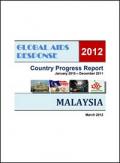
Resource | Publications,
The preparation of country report had begun as early as December 2011. Under the leadership of Ministry of Health Malaysia, series of consultations were convened involving various stakeholders to capture as much of opinions and responses to HIV. Apart from Ministry of Health officials especially from HIV/STI Section, others involved were government ministries and departments, non-government organizations (NGO), civil society, bilateral and international agencies, clinicians and academia.
The first in-country consultative meeting was convened in 15 February 2012 where orientation of report was briefed and indicators were agreed upon. During the meeting, stakeholders were also informed about newly added indicators for 2012 reporting. Good practices were identified and agreed to be included and highlighted in the report. The challenges and remedial actions were also determined in the same manner.





